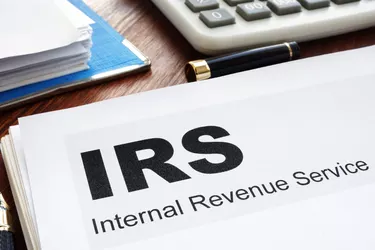
Interpreting IRS account transcript codes can be an intimidating and confusing process. These three-digit codes scattered around your tax transcript are typically no reason to cause alarm, but deciphering them can be arduous, especially when you're not sure where to start. Fortunately, arming yourself with the basics can ease deciphering your IRS transcript.
What Are IRS Account Transcript Codes?
Video of the Day
To electronically process and review tax returns, the IRS uploads all paper and electronic documents to the Master File. As returns go through this process, every change and stage of review is marked with a transcript code.
Video of the Day
There are several categories under the Master File, all utilized by the IRS to track progress on tax returns. These categories include: Individual Master File (IMF), Business Master File (BMF), Employee Plans Master File (EPMF), Information Returns Master File (IRM) and Individual Retirement Account Master File (IRAF).
The IMF stores information regarding taxpayers and their individual income tax returns, while the BMF contains information about taxpayers' business returns and related documents. The EPMF holds information on returns filed for trusts, pensions and profit-sharing plans. Information Returns Master File contains tax return details, such as Form W-2s. Lastly, the IRAF is home to information on taxpayers who have established an individual retirement arrangement.
Consider Also: What Is a Tax Transcript?
The Five Types of Transcripts
Account transcripts, return transcripts, record of account transcripts, wage and income transcripts and verification of nonfiling letter transcripts are the five types of transcripts you can request access to.
These transcripts can be requested online by creating an account with the IRS and accessing the IRS Get Transcript tool. The account transcript will provide an overview of the account, including information on filings, extensions, withholdings and other IRS account activity.
The majority of IRS actions are noted on these transcripts. A return transcript holds more details of an original tax return than the other transcripts listed; however, it will not contain actions taken after the return was processed, including amendments.
Record of account transcripts are a combination of the account transcript and return transcript. This transcript reveals the bigger picture by including the return as well as changes made post-processing. Wage and income transcripts show reported income, and verification of nonfiling letter transcripts are produced when there's no return on file.
Consider Also: The Difference Between Tax Transcripts & Tax Returns
Common IRS Account Transcript Codes
Codes featured on a transcript can be found in the IRS Transaction Codes Pocket Guide. While there are hundreds of possible transcript codes, below are some of the most common.
IRS Code 150 indicates a return filed and tax liability assessed. It can appear on IMF, BMF and EPMF. IRS Code 290 indicates an additional tax assessment and appears on IMF and BMF. IRS Code 570 indicates an additional liability is pending or a credit hold. It can appear on IMF, BMF and EPMF. IRS Code 766 indicates a generated refundable credit allowance on IMF and BMF.
IRS Tax Code 806 indicates a credit for withheld taxes and excess FICA. It appears in IMF and BMF. IRS Code 826 indicates the transfer of an overpayment and can appear on IMF and BMF. IRS Code 846 indicates a refund overpayment and can appear on IMF and BMF.